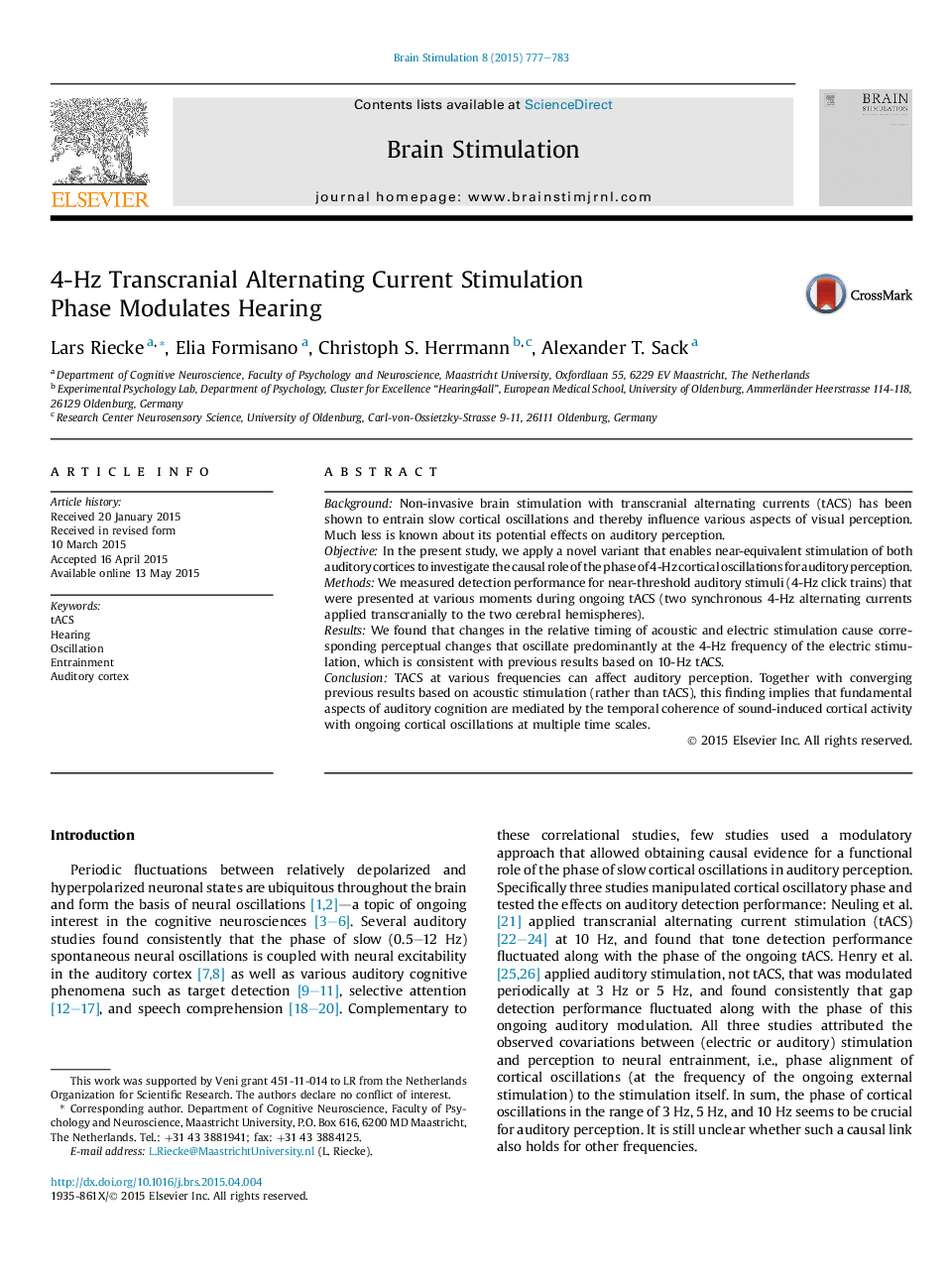| Article ID | Journal | Published Year | Pages | File Type |
|---|---|---|---|---|
| 6005250 | Brain Stimulation | 2015 | 7 Pages |
â¢4-Hz tACS phase over auditory cortex can modulate hearing.â¢Delta/theta cortical oscillations play a crucial role for hearing.â¢This is the first study to use bilateral dual-channel tACS.
BackgroundNon-invasive brain stimulation with transcranial alternating currents (tACS) has been shown to entrain slow cortical oscillations and thereby influence various aspects of visual perception. Much less is known about its potential effects on auditory perception.ObjectiveIn the present study, we apply a novel variant that enables near-equivalent stimulation of both auditory cortices to investigate the causal role of the phase of 4-Hz cortical oscillations for auditory perception.MethodsWe measured detection performance for near-threshold auditory stimuli (4-Hz click trains) that were presented at various moments during ongoing tACS (two synchronous 4-Hz alternating currents applied transcranially to the two cerebral hemispheres).ResultsWe found that changes in the relative timing of acoustic and electric stimulation cause corresponding perceptual changes that oscillate predominantly at the 4-Hz frequency of the electric stimulation, which is consistent with previous results based on 10-Hz tACS.ConclusionTACS at various frequencies can affect auditory perception. Together with converging previous results based on acoustic stimulation (rather than tACS), this finding implies that fundamental aspects of auditory cognition are mediated by the temporal coherence of sound-induced cortical activity with ongoing cortical oscillations at multiple time scales.
